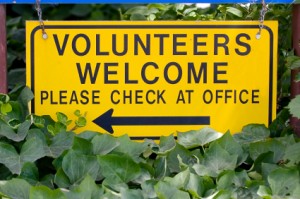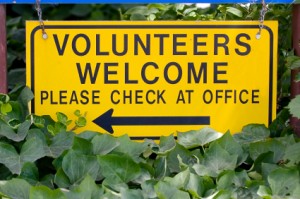When Volunteers Come Knocking on Your Door
Thursday, January 27th, 2011 The U.S. Bureau of Labor Statistics (BLS) released its “Volunteering in America” report this week, which revealed that overall volunteerism declined in 2010 by .5 percent.
The U.S. Bureau of Labor Statistics (BLS) released its “Volunteering in America” report this week, which revealed that overall volunteerism declined in 2010 by .5 percent.
But in some regions, the economic climate has fostered a booming number of volunteers for charitable organizations. The BLS report indicates that about 13 million of the 62.8 million adults who donated time to organizations from September 2009 to September 2010 were unemployed or working part time.
It makes sense that unemployed people and part-time workers would be more inclined to volunteer because they have more time. The spike has been beneficial to many organizations. In Kansas City, the Humane Society has seen a big increased in volunteers who came knocking on the door. They didn’t have to recruit any of this new group, because they are all unemployed and looking for productive ways to fill their time.
Former workaholics who can’t sit home being unemployed are turning to charities as an outlet for their energy. Others are reaching out to nonprofits to increase their networking opportunities, update their skills and find job leads. One nonprofit executive director said there is only one problem with volunteers who find jobs through their volunteer activities—they tend to go away.
In the meantime, nonprofits are receiving hundreds of hours of valuable time, along with outreach and marketing advice, financial planning, foreign language interpretation services and a host of professional services they could not otherwise afford.
It’s a win-win for the volunteers, as well. When they do line up a job interview, they might find employers are often impressed to see the gaps in their resumes filled with volunteer activities.
So if you have an influx of unemployed folks wanting to volunteer with your organization, consider it a stroke of luck that may or may not last, depending on the economy. Proper orientation, training, evaluations and engagement will go a long way to ensuring your new volunteers stick around—even if they do find a job!







 The top ten rated U.S. cites for volunteering are: Minneapolis-St. Paul, MN; Portland, OR; Salt Lake City, UT; Seattle, WA; Kansas City, MO; Columbus, OH; Oklahoma City, OK; Hartford, CT; Denver, CO; and Washington, DC.
The top ten rated U.S. cites for volunteering are: Minneapolis-St. Paul, MN; Portland, OR; Salt Lake City, UT; Seattle, WA; Kansas City, MO; Columbus, OH; Oklahoma City, OK; Hartford, CT; Denver, CO; and Washington, DC. Volunteering appears to prove the saying, “’tis better to give than to receive.” While most volunteers’ intentions are solely to help others, researchers say that the benefits to the volunteers are also numerous.
Volunteering appears to prove the saying, “’tis better to give than to receive.” While most volunteers’ intentions are solely to help others, researchers say that the benefits to the volunteers are also numerous. Tap into a group you might not have considered for volunteers: kids! Many parents and guardians are encouraging their children to volunteer during their downtime. More and more high schools require volunteer projects to graduate. Community giving days and National Volunteer Week focus attention on nonprofits. Is yours ready to take advantage of the increase in younger volunteers?
Tap into a group you might not have considered for volunteers: kids! Many parents and guardians are encouraging their children to volunteer during their downtime. More and more high schools require volunteer projects to graduate. Community giving days and National Volunteer Week focus attention on nonprofits. Is yours ready to take advantage of the increase in younger volunteers?
